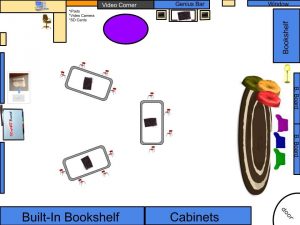This week I looked at three games. The first is ClassDojo, the second is Quizizz and the third is Mission US. I will be honest, I am not much of a game player nor do I really encourage it often in class, for the simple fact that games require much accommodation. So many times, we take for granted what students can do and not do while other times, we assume as well. My first experience with gaming was Mission US, back when I taught Middle School History. It was not a fun experience. It was not an independent game, it was a classroom game in which the students needed to depend on me to advance. I went back to see what changes, if any, we there. As a hearing person as well as self proclaimed nerd, I liked the interaction of the game and being able to make choices and “seeing” how they played in history. I was happy to see that they have updated it and that there are other missions to be had. Diane Murray reports on the successes in her classroom using Mission US on YouTube. She explains that using a game in which students are invested makes the learning more engaging. The material, the facts and the vocabulary are more meaningful.
I use Quizizz often in my class. I use it as homework as well as for quizzes. The immediate response and intervention aspect is imperative. It is the silly things that make the game engaging. My students live for the competitive nature and believe it or not, the memes are the biggest draw. Students have reported that that really enjoy practicing at home and being able to check their answers. They find it beneficial as a means to study and self correct. As a teacher, I like that I can use previous quizzes, adapt and modify as well as pull from quiz question banks. There are not a variety of ways to “win” unlike Mission US, but it is a solid tool that works well with my students.
The final game I selected was Classdojo. I had heard of this before, but never used it. For this review, I am using the lens of a parent. My daughter’s started school on Monday. While my 2nd grader is still using the clip up and down system (do not get me started), my 3rd grader is using Classdojo. While this is not a “game” in the traditional sense, it is a motivator like a game. Students get to create a personal avatar or monster. The students can then earn points which they can exchange for rewards in the classroom. My daughter’s goal is to sit in the teacher’s chair during AR time. This management is easy and cheap to use. As a teacher, I see the benefits. As a parent, I have to agree with blogger, Alesha Bishop in her review, the privacy issue is a concern. Kids know. A close pin with a number is not really anonymous. Kids know. I hear on a daily basis who is on red (clip down) and who is on purple (clip up), so monsters are no different. Making sure that the management game are being used to help support and not drag down, I am in support.

